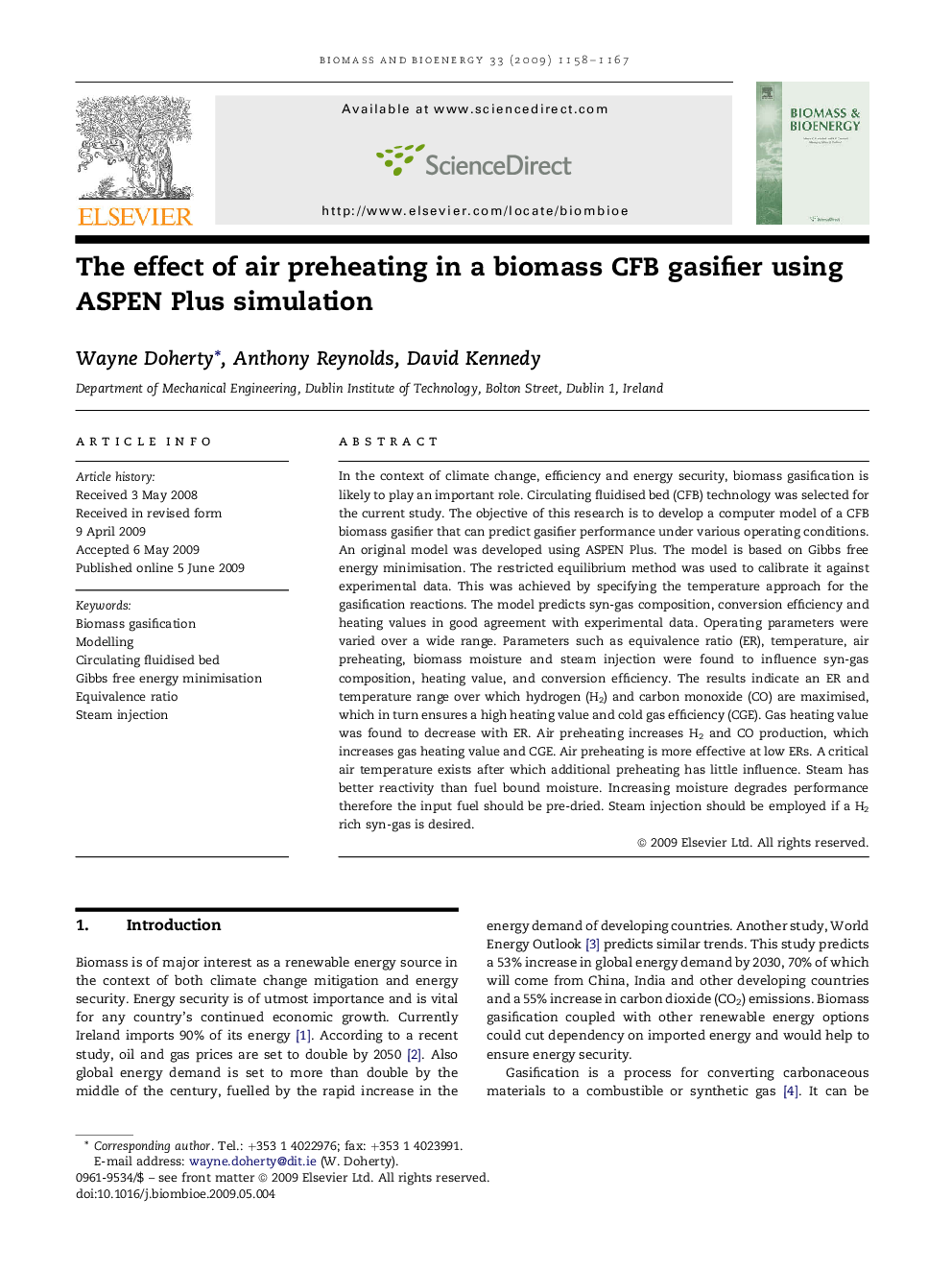| Article ID | Journal | Published Year | Pages | File Type |
|---|---|---|---|---|
| 677933 | Biomass and Bioenergy | 2009 | 10 Pages |
In the context of climate change, efficiency and energy security, biomass gasification is likely to play an important role. Circulating fluidised bed (CFB) technology was selected for the current study. The objective of this research is to develop a computer model of a CFB biomass gasifier that can predict gasifier performance under various operating conditions. An original model was developed using ASPEN Plus. The model is based on Gibbs free energy minimisation. The restricted equilibrium method was used to calibrate it against experimental data. This was achieved by specifying the temperature approach for the gasification reactions. The model predicts syn-gas composition, conversion efficiency and heating values in good agreement with experimental data. Operating parameters were varied over a wide range. Parameters such as equivalence ratio (ER), temperature, air preheating, biomass moisture and steam injection were found to influence syn-gas composition, heating value, and conversion efficiency. The results indicate an ER and temperature range over which hydrogen (H2) and carbon monoxide (CO) are maximised, which in turn ensures a high heating value and cold gas efficiency (CGE). Gas heating value was found to decrease with ER. Air preheating increases H2 and CO production, which increases gas heating value and CGE. Air preheating is more effective at low ERs. A critical air temperature exists after which additional preheating has little influence. Steam has better reactivity than fuel bound moisture. Increasing moisture degrades performance therefore the input fuel should be pre-dried. Steam injection should be employed if a H2 rich syn-gas is desired.
